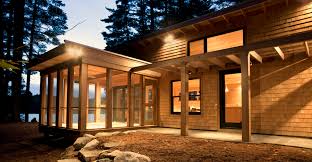
Maine, known for its rugged coastline, lush forests, and quaint villages, is also home to a distinctive breed of Maine architects who blend creativity with the state’s unique environmental and cultural context. Maine architects are renowned for their ability to design spaces that harmonize with the natural landscape while reflecting the state’s rich history and diverse communities.
Embracing Nature: The Maine Architectural Ethos
One of the defining characteristics of Maine architecture is its deep respect for the natural environment. Maine architects often draw inspiration from the state’s dramatic landscapes, which include the rocky shores of Acadia National Park, the rolling hills of the interior, and the dense pine forests that give the state its name. This natural inspiration translates into designs that emphasize sustainability, minimalism, and a harmonious relationship with the surroundings.
Many architects in Maine use locally sourced materials such as granite, slate, and timber, which not only support the local economy but also ensure that their buildings blend seamlessly with the environment. For instance, the use of weathered wood and stone in residential and commercial projects often mirrors the natural textures and colors found in the state’s diverse ecosystems.
A Nod to History: Historic Preservation and Modern Adaptation
Maine’s rich historical heritage is another vital element in the architectural landscape. Many of the state’s architects are committed to preserving historic structures while adapting them to modern needs. This dedication is evident in projects that carefully restore 19th-century sea captains’ homes, antique barns, and historic churches, while incorporating contemporary amenities and energy-efficient technologies.
For example, architects in Portland, Bangor, and other historic cities often undertake projects that involve repurposing old warehouses or industrial buildings into vibrant, modern spaces such as loft apartments, galleries, and offices. This adaptive reuse not only preserves the architectural heritage but also breathes new life into these structures, keeping them relevant and functional for today’s needs.
Innovative Residential Designs: From Seaside Retreats to Rural Residences
Maine architects are known for their innovative residential designs that cater to a variety of lifestyles. Coastal homes, often designed to withstand harsh marine conditions, feature robust construction techniques and open floor plans that maximize breathtaking views of the Atlantic Ocean. These homes often incorporate large windows, spacious decks, and natural materials that help residents connect with their stunning surroundings.
In contrast, rural residences in Maine might focus on warmth and coziness, integrating traditional design elements such as stone fireplaces and wood paneling with modern conveniences. Architects in these settings often design homes that offer a retreat from the bustle of urban life, with layouts that emphasize privacy, comfort, and a connection to the tranquil landscape.
Community-Centric Projects: Enhancing Local Life
Beyond individual residences, Maine architects are deeply involved in community-centric projects that enhance local life. This includes designing public spaces like community centers, libraries, and schools that serve as hubs for social interaction and cultural enrichment. These projects often reflect the local character and values, incorporating features that are tailored to the specific needs and preferences of the community.
In recent years, there has been a growing trend towards designing spaces that promote environmental sustainability and energy efficiency. Many architects in Maine are leading the charge in integrating green building practices, such as passive solar design, rainwater harvesting systems, and energy-efficient heating and cooling technologies.
Conclusion
The architectural landscape of Maine is a testament to the state’s unique blend of natural beauty, historical richness, and community spirit. Maine architects continue to push the boundaries of design while honoring the state’s distinctive character. Their work not only enhances the physical environment but also contributes to the cultural and social fabric of the Pine Tree State, creating spaces that are both functional and inspirational.